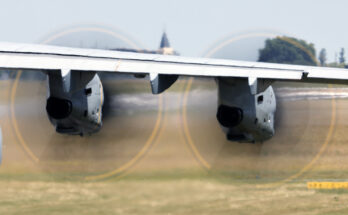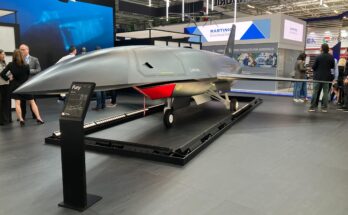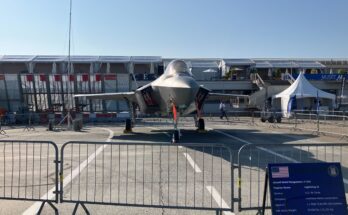
The merger of Raytheon and United Technologies Corp (UTC) is now complete, creating a $74 billion defense giant in the process.
The new Raytheon Technologies is now third in terms of defense contractors, behind Lockheed Martin and Boeing. For 2019, Lockheed Martin ranked number one in terms of U.S. Federal contractors with $48.7 billion in contracts, the combined Raytheon and UTC had pro forma contracts valued at $25.2 billion, just behind second place Boeing at $28.1 billion.
Overall, the company is forecast to be the world’s second-largest aerospace and defense conglomerate after Boeing, with revenue roughly split between the two markets.
Tom Kennedy is now executive chairman and Greg Hayes has taken the helm as CEO of Raytheon Technologies. In 2022, Hayes will assume the role of chairman and CEO.
The firm is headquartered at Raytheon’s old HQ in Waltham, Massachusetts, and will retain a corporate presence in existing locations with some 195,000 employees. Raytheon Technologies consists of four businesses – the defense-oriented Intelligence & Space and Missiles & Defense and the commercial aerospace facing Collins Aerospace Systems and Pratt & Whitney.
Raytheon Intelligence & Space specializes in developing advanced sensors, training, and cyber and software solutions. The new division was formed by consolidating Raytheon Space and Airborne Systems with Raytheon Intelligence, Information and Services. The segment is led by President Roy Azevedo, headquartered in Arlington, Virginia, with approximately $15 billion in pro forma 2019 net sales.
Raytheon Missiles & Defense provides the industry’s most advanced end-to-end solutions to detect, track and engage threats. This unit was formed from the old Raytheon Missile Systems and Raytheon Integrated Defense Systems. The segment is led by President Wes Kremer, headquartered in Tucson, Arizona, with approximately $16 billion in pro forma 2019 net sales.
Collins Aerospace Systems specializes in aerostructures, avionics, interiors, mechanical systems, mission systems and power controls that serve customers across the commercial, regional, business aviation and military sectors. The segment is led by President Stephen Timm, and headquartered in Charlotte, North Carolina, with approximately $26 billion in 2019 net sales.
Pratt & Whitney designs, manufactures and services advanced aircraft engines and auxiliary power systems for commercial, military and business aircraft. The segment is led by President Chris Calio and headquartered in East Hartford, Connecticut, with approximately $21 billion in 2019 net sales.
With some 60,000 engineers and combined annual company- and customer-funded R&D spending of approximately $8 billion, Raytheon Technologies will have the scale and funding to develop new technologies faster and more efficiently. The combined company expects to introduce breakthrough technologies at an accelerated pace across high-value areas such as hypersonics, directed energy, avionics and cybersecurity.
“Raytheon Technologies brings together two companies with combined strengths and capabilities that make us uniquely equipped to support our customers and partners during this unprecedented time. We will also play our part in the war on the COVID-19 pandemic, including doing everything we can to keep our employees around the globe safe and well,” said Greg Hayes, CEO of Raytheon Technologies in a statement.
Tom Kennedy, executive chairman of Raytheon Technologies, added, “Our platform-agnostic, diversified portfolio brings together the best of commercial and military technology, enabling the creation of new opportunities across aerospace and defense for decades to come.”
The merger caps off an active couple of years in major defense consolidation. In addition to UTC’s $30 billion Rockwell Collins buy, Harris (which also bought Exelis) and L3 just consummated their merger. Prior to that, Northrop Grumman absorbed Orbital ATK, General Dynamics added CSRA to its portfolio, and Lockheed Martin bought Sikorsky from UTC.
A military history enthusiast, Richard began at Forecast International as editor of the World Weapons Weekly newsletter. As the Internet grew in importance as a research tool, he helped design the company's Forecast Intelligence Center and currently coordinates the EMarket Alert newsletters for clients. Richard also manages social media efforts, including two new blogs: Defense & Security Monitor, covering defense systems and international issues, and Flight Plan, which focuses on commercial aviation and space systems. For over 30 years, Richard has authored the Defense & Aerospace Companies, Volume I (North America) and Volume II (International) services. The two books provide detailed data on major aerospace and defense contractors. He also edits the International Contractors service, a database that tracks all the contractors involved in the programs covered in the FI library. More recently he was appointed Manager, Information Services Group (ISG), a new unit that encompasses developing outbound content for both Forecast International and Military Periscope.




